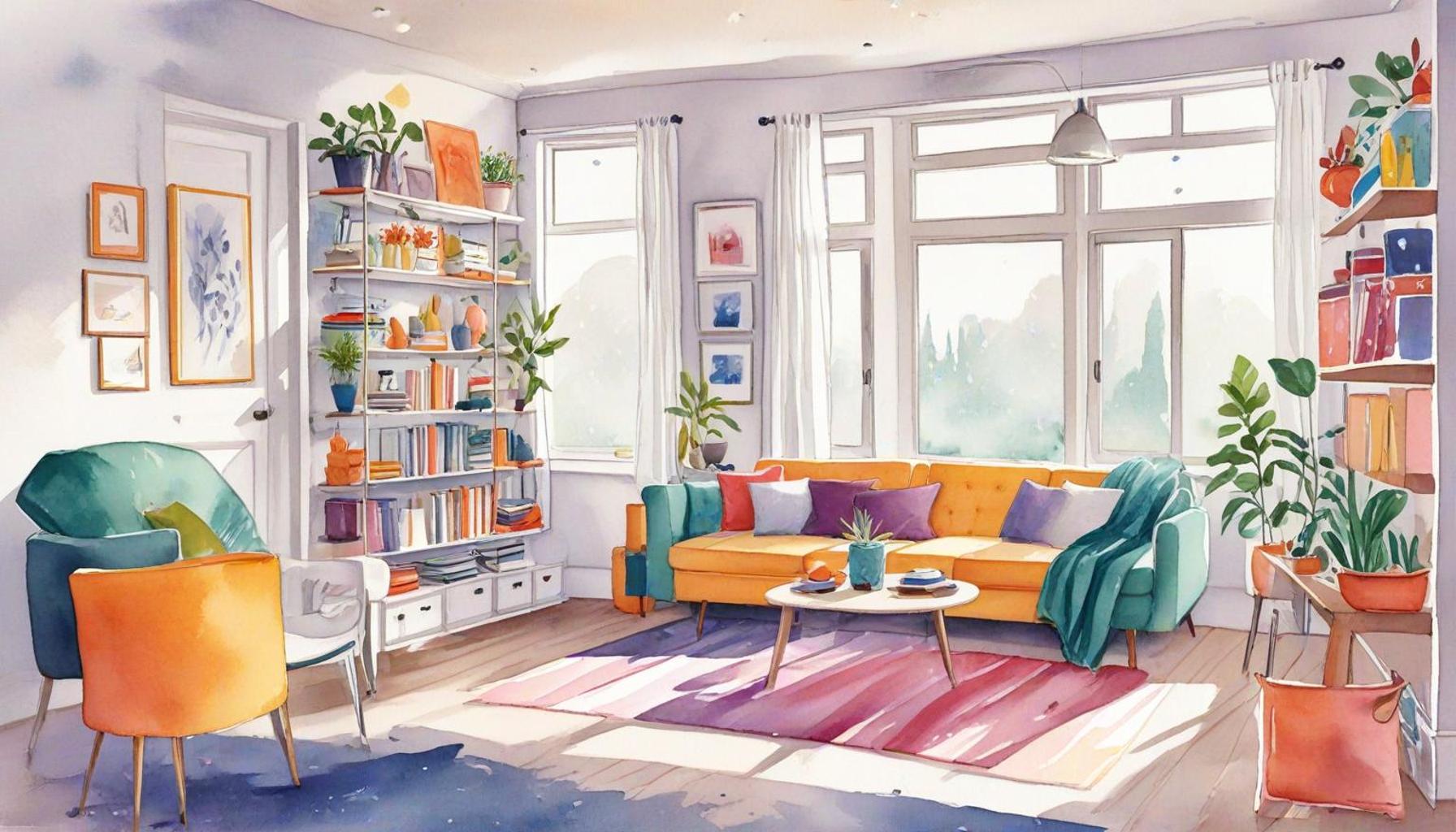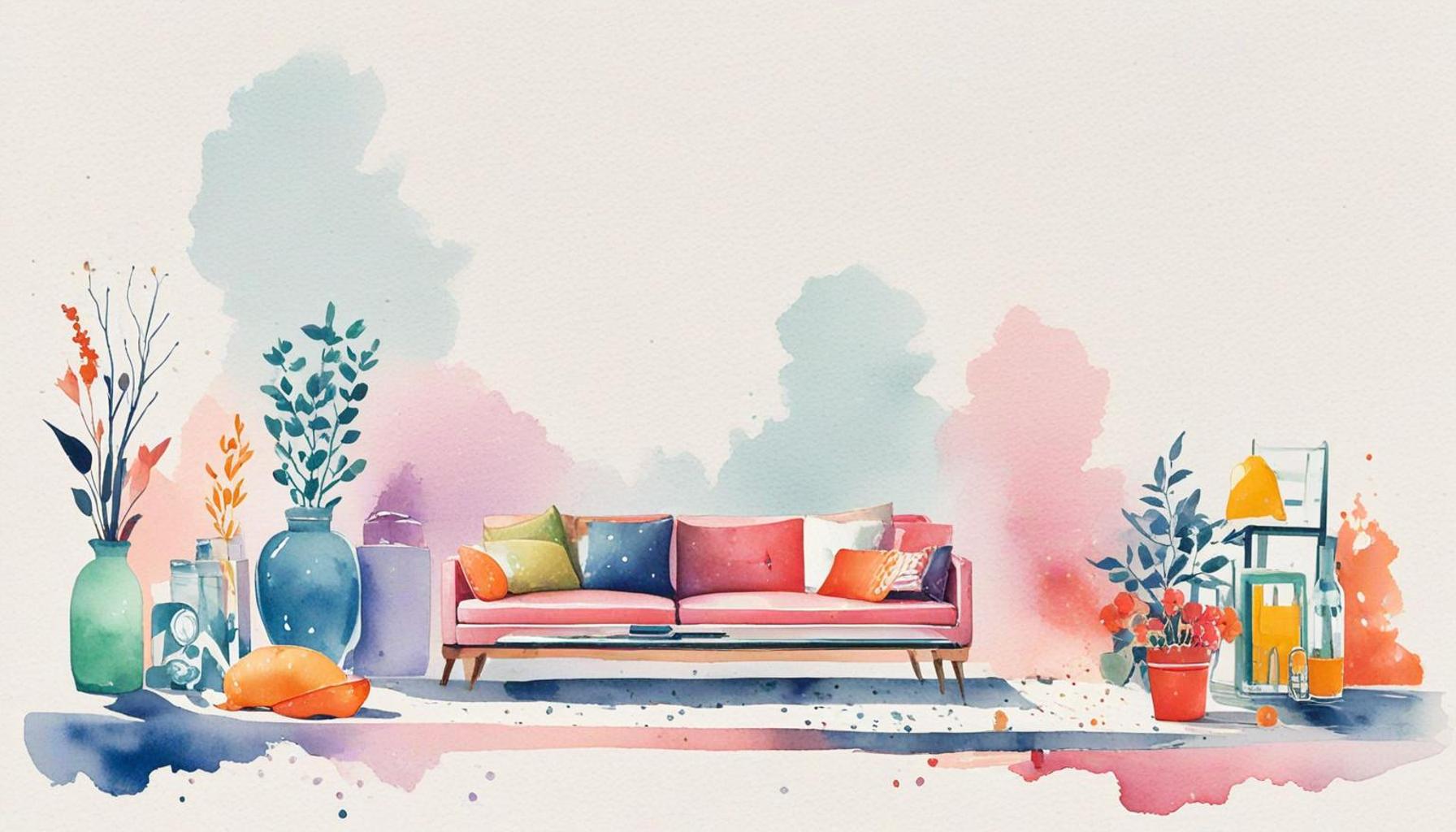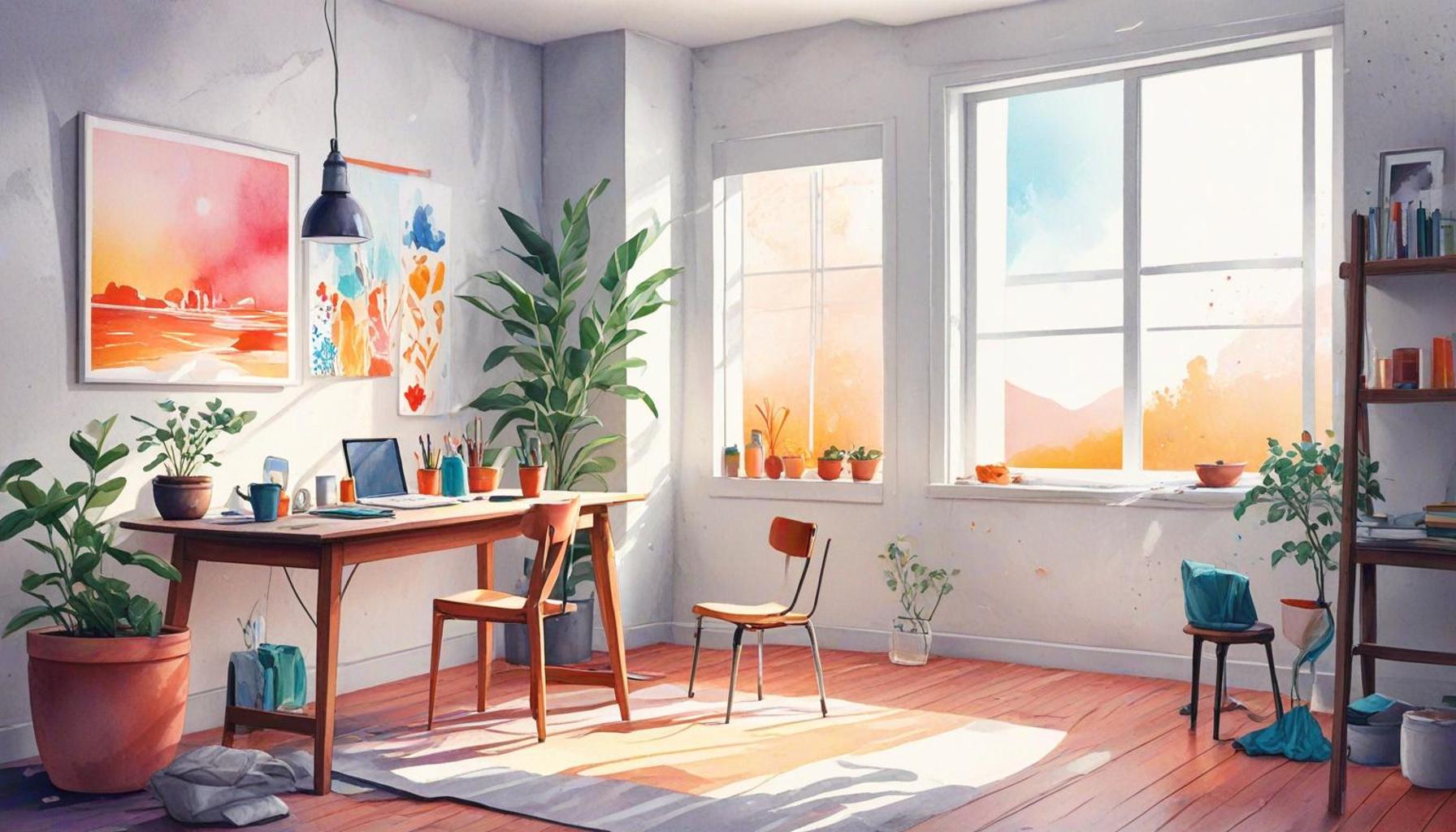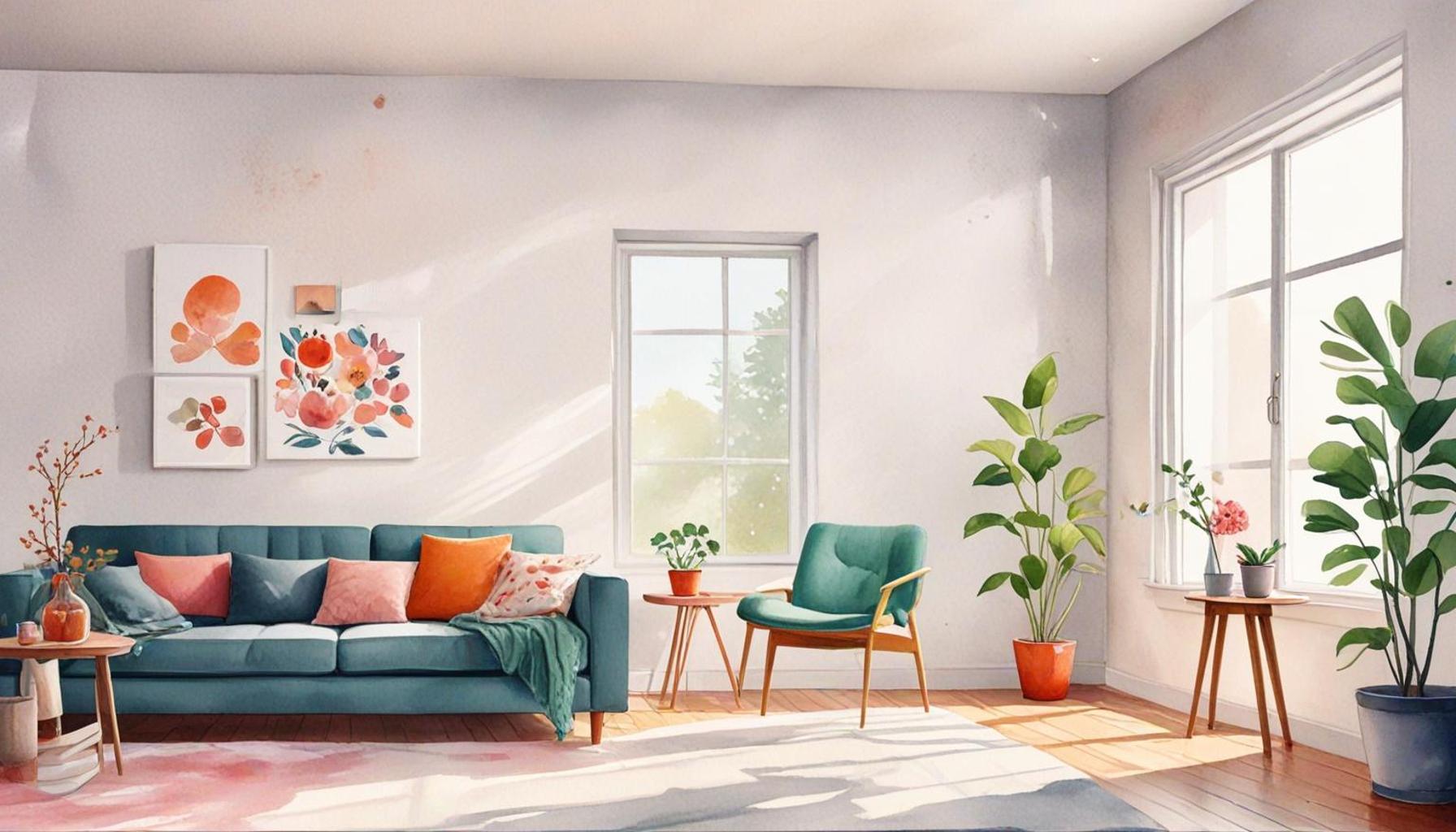How to Incorporate Intentional Design in the Organization of Small Spaces

Understanding the Importance of Intentional Design
In a world where urban living spaces are becoming increasingly compact, the demand for innovative design solutions is on the rise. Intentional design stands out as an approach that not only addresses functional needs but also enriches the aesthetic experience of a space. By consciously organizing and planning every element, individuals can create environments that resonate with purpose and beauty, transforming even the smallest of spaces into havens of creativity and comfort.
The Cornerstones of Intentional Design
Delving deeper into the particularly vital aspects of intentional design reveals several foundational elements worthy of exploration. Each of these plays a pivotal role in maximizing small spaces:
- Clarity of Purpose: Every corner should be designated for a specific activity. For example, if a space serves as both a living room and a workspace, it helps to identify distinct zones. A small bookshelf can distinguish the reading corner, while a strategically placed desk can signal the working area. This clarity can streamline daily activities and minimize distractions.
- Multi-Functional Furniture: Incorporating versatile furniture is a game-changer in small environments. Consider investing in a Murphy bed that folds up into the wall, allowing for extra floor space during the day. Alternatively, nesting tables can expand your living space when entertaining guests and be neatly tucked away after use. Such pieces not only facilitate functionality but also contribute to a stylish aesthetic.
- Optimized Storage Solutions: When it comes to small spaces, creative storage is essential. Utilizing vertical space effectively can involve installing shelves that go up to the ceiling, maximizing every inch. Hidden compartments, such as ottomans with storage or beds with drawers underneath, help keep surfaces clear of clutter, so your environment feels open and organized.
Whether you’re redesigning a small office in the bustling heart of New York City or trying to make the most of a cozy apartment in Austin, the principles of intentional design can significantly influence your choices. By prioritizing efficiency and aesthetic appeal, individuals can cultivate spaces that not only function well but also enhance overall well-being. A thoughtfully designed small space has the power to evoke a sense of tranquility and inspiration, essential for personal and professional productivity.
Strategies for Implementation
Exploring actionable strategies for implementing intentional design can further inspire creativity. Begin by evaluating your space—embrace your unique vision. Use color palettes that reflect your personality, as light colors can make a room feel larger and more open, while darker hues can add depth and coziness when used strategically. Another impactful strategy is incorporating plants, which can purify the air and infuse life into a space—making it more inviting and vibrant.
Ultimately, embracing intentional design is about recognizing that every square foot has potential. By reconsidering how we organize and equip our environments, we can redefine our surroundings to reflect our needs and aspirations. This mindset not only promotes practicality but also invites exploration into the endless possibilities that small spaces offer. So, whether you’re a homeowner or a business owner, think carefully about each component of your space, and let intentional design guide your journey towards transforming your living or working environment.

DIVE DEEPER: Click here to explore minimalist design ideas
Strategies for Implementation
Exploring actionable strategies for implementing intentional design can further inspire creativity within small environments. The first step is to conduct a thorough assessment of your space—understanding its dimensions, light sources, and flow of movement. This not only allows you to visualize the potential of each corner but also helps you identify areas that may require transformation. Begin by embracing your unique vision and preferences. Consider adopting a color palette that reflects your personality; while lighter tones often create an illusion of more space, deeper hues can evoke warmth and intimacy when applied thoughtfully.
Next, it is essential to focus on how furniture arrangement can optimize your space. For instance, placing furniture away from walls can create a more inviting atmosphere and enhance conversation flow, making the area feel more expansive. Additionally, try to arrange furniture in a way that promotes multi-use functionality. Each piece should not just occupy space but play a role in enhancing lifestyle quality.
Smart Use of Vertical Space
In small spaces, expanding vertically can be a remarkable game-changer. Utilizing walls for storage and décor can dramatically enhance your living or working environment. Here are a few innovative ways to maximize vertical space:
- Montage of Shelves: Install shelves of varying heights to create visual interest. This not only serves as a storage solution but also allows for decorative displays that add personality to your space.
- Artful Hooks: Use wall-mounted hooks to hang items such as coats, hats, or accessories. This approach keeps items organized while also contributing to the overall aesthetic.
- Floating Desks: Consider a wall-mounted desk that folds away when not in use. This ideal choice creates an effective workspace without consuming precious floor space.
Meanwhile, think about incorporating plants as another vessel for bringing life into small spaces. Greenery not only purifies the air but also provides a sense of peace and creates a natural focal point, making your environment more inviting. It’s important to select plants that can thrive indoors and fit within the designated spaces—like succulents or pothos plants—which require minimal maintenance and are aesthetically pleasing.
Finally, make organization an art form—invest in decorative baskets or stylish containers that offer storage while enhancing the visual appeal. These elements can seamlessly blend functionality with design, ensuring that your small space feels cohesive and intentional. Remember, every piece of furniture, every wall, and every decorative item are opportunities for expressing your style while maintaining organization.
Ultimately, the journey of incorporating intentional design into small spaces is about recognizing that even the tightest quarters hold incredible potential. By combining practicality with creativity, you can transform a small area into a sanctuary that reflects both your personal and professional needs. Whether you’re revamping a tiny home office in a downtown loft or maximizing an apartment kitchen, a thoughtful design will not only enhance usability but also promote a tranquil environment that nurtures inspiration and productivity.
| Advantage | Details |
|---|---|
| Maximized Functionality | Intentional design allows for every inch of space to serve a purpose, enhancing usability. |
| Aesthetic Appeal | A well-organized small space can create a visually appealing environment, attracting attention. |
| Emotional Well-Being | Thoughtfully designed spaces contribute to a sense of tranquility, significantly improving mental health. |
| Increased Productivity | Organized workspaces lead to fewer distractions, enabling better concentration and productivity. |
In today’s world, where small living spaces are increasingly common, the concept of intentional design becomes vital. By focusing on function and form, we can create environments that not only make the best use of available space but also enhance our overall quality of life. Understanding how to blend functionality with visual aesthetics is critical in achieving a space that feels as spacious and inviting as possible.For instance, using multi-purpose furniture can lead to a significant increase in the utility of small areas. This technique, combined with strategically placed storage solutions, can drastically reduce clutter and provide a more open feel. Furthermore, the psychological benefits of such design choices shouldn’t be overlooked; a harmonious small space fosters a sense of calm and order, while also directly impacting productivity levels.When considering how to approach the organization of small spaces, employing intentional design strategies invites creativity and innovation, encouraging anyone faced with limited room to think outside the box. Exploring this topic further can unveil countless possibilities for enhanced living and working environments, enticing readers to rethink their spaces methodically.
DIVE DEEPER: Click here to learn more
Leveraging Technology for Intentional Design
As we embrace the digital age, technology can play a crucial role in enhancing the intentional design of small spaces. Various applications and smart devices can assist in creating an organized and aesthetically pleasing environment. For instance, utilize virtual reality (VR) apps that allow you to visualize changes in your space before physical alterations are made. This can be particularly beneficial for experimenting with furniture arrangements and color schemes that best reflect your style while optimizing space.
An increasingly popular choice is the use of smart home technology, which can make small living areas not only more functional but also more efficient. Smart lighting systems can be programmed to adjust brightness and color temperature based on the time of day, enhancing mood and making a small space feel more expansive. These devices can often be controlled with a smartphone, helping you manage space efficiently without sacrificing design.
Modular Design Solutions
Another essential aspect of intentional design is the adoption of modular furniture. These versatile pieces can be adapted to different needs and layouts. Sofas that transform into beds or coffee tables that expand into dining tables optimize functionality without consuming excessive floor space. Moreover, modular systems tend to yield a clean, modern aesthetic, making them ideal for small environments.
Consider custom or built-in furniture solutions tailored to your specific needs, maximizing every inch of available space. For example, designing a bench with storage beneath it can serve not only as seating but also as a discreet place to store shoes or other items. These hidden storage solutions are integral to maintaining organization and visual harmony within small spaces.
Incorporating Color and Textiles Thoughtfully
The significance of textiles in intentional design should not be underestimated. Fabrics can soften the appearance of a room, add warmth, and introduce texture. When selecting curtains, pillows, and throws, consider how these elements can unify your design. Light fabrics can enhance luminosity, while bolder patterns can create focal points in smaller areas.
Furthermore, the effective use of area rugs can help define different spaces within an open floor plan. Choose rugs that complement your color palette and create distinct zones, enhancing the overall structure of the area without overwhelming it. Depending on your style, layered rugs can add an eclectic touch that enriches the space while grounding furniture arrangements.
Utilizing Reflective Surfaces
Lastly, consider the powerful impact of reflective surfaces in small spaces. Mirrors not only serve decorative purposes; they can create an illusion of depth and light. By strategically positioning mirrors, you can bounce natural light around your space, making it feel larger and more airy. Incorporating mirrored furniture or fixtures adds elegance while also contributing to the expansive feel.
When designed thoughtfully, every element within your small space can work together to serve a dual purpose of practicality and intentionality. From leveraging technology and modular solutions to carefully selecting textiles and reflective surfaces, your approach to intentional design will elevate your everyday experiences, making your small space not just livable but truly enjoyable.
DISCOVER MORE: Click here for tips on boosting efficiency in minimalist spaces
Conclusion: Embracing Intentional Design in Small Spaces
In an era where urban living often means limited square footage, incorporating intentional design within small spaces is more crucial than ever. By thoughtfully considering elements such as technology, modular furniture, and the careful selection of textiles and colors, individuals can create environments that are not only functional but also visually stunning. Each aspect of design offers the opportunity to enhance both the aesthetics and the practicality of a small area. For example, utilizing reflective surfaces can amplify natural light, making a compact space feel more open and inviting.
Furthermore, personalized touches and innovative solutions can redefine what it means to live comfortably in smaller settings. Pay attention to how to maximize every inch of available space while infusing your style into each corner. Intentional design goes beyond mere decoration; it is about creating a cohesive atmosphere that brings joy and efficiency to daily life.
As you embark on your journey of intentional design, remember to view your small space as a canvas for creativity. Utilize resources like virtual reality apps for planning and smart devices to enhance functionality. The possibilities are limitless when you blend modern sensibilities with your personal flair. Ultimately, intentional design serves to enrich everyday experiences, transforming small spaces into well-organized sanctuaries that embody both style and substance.


